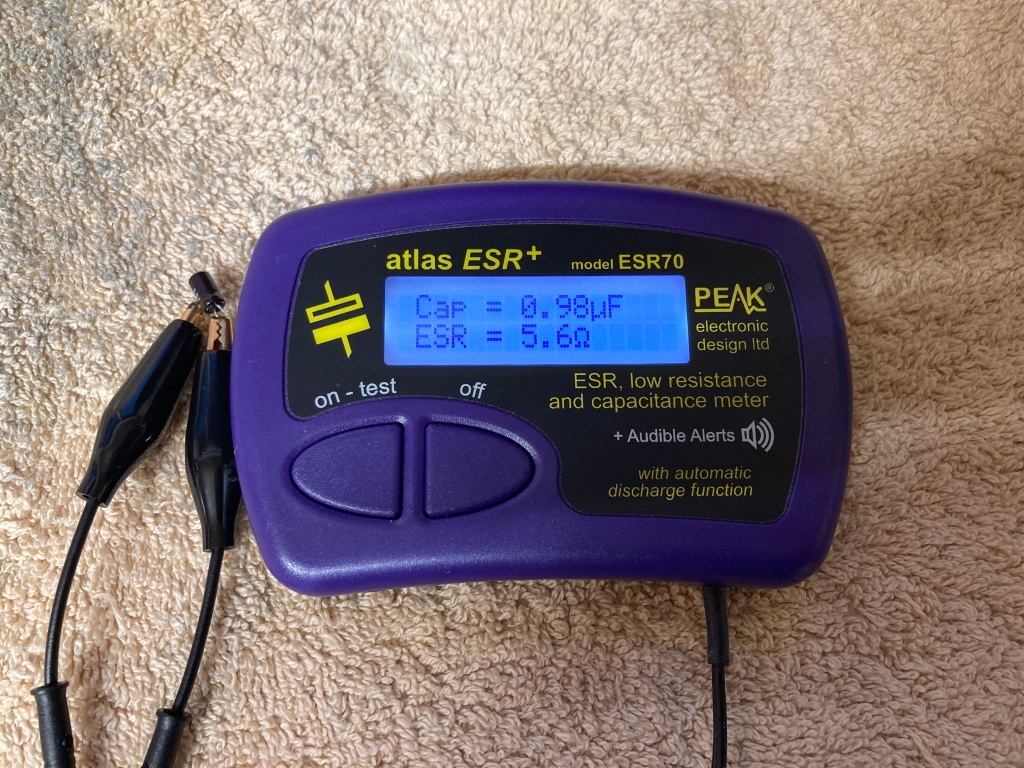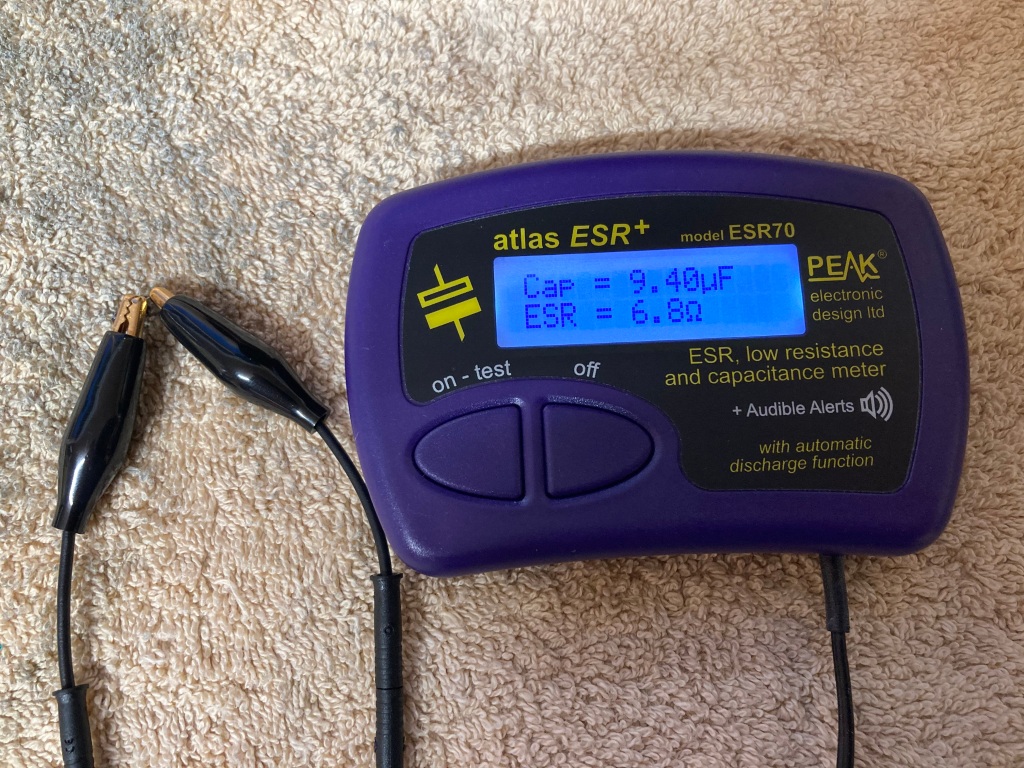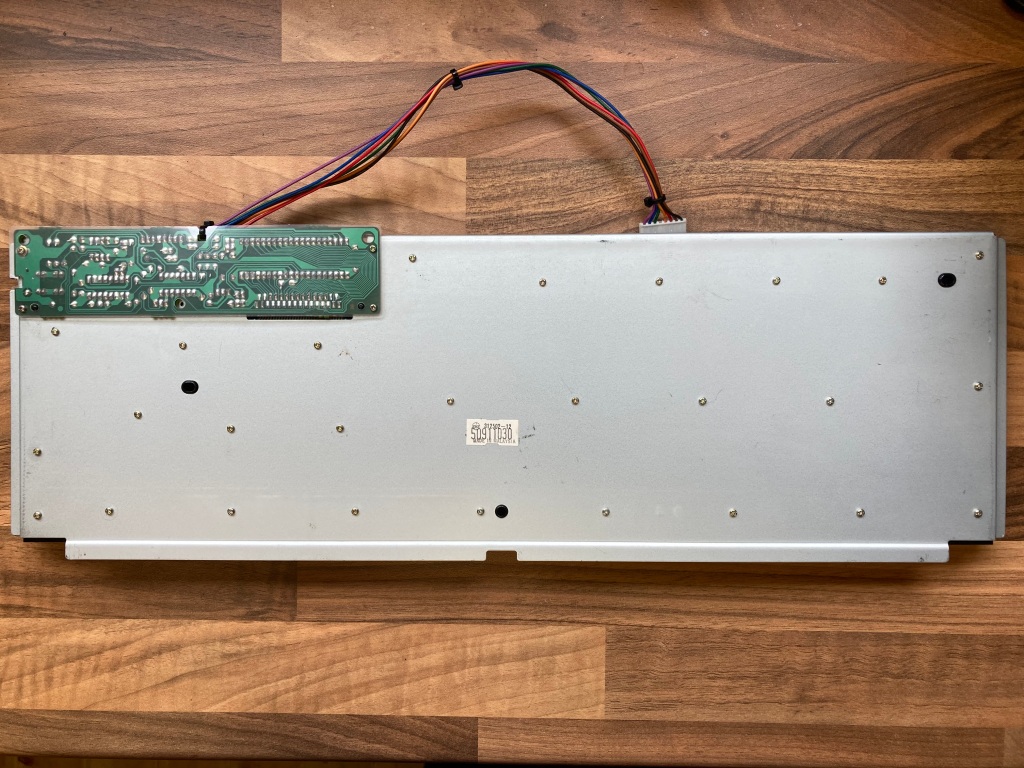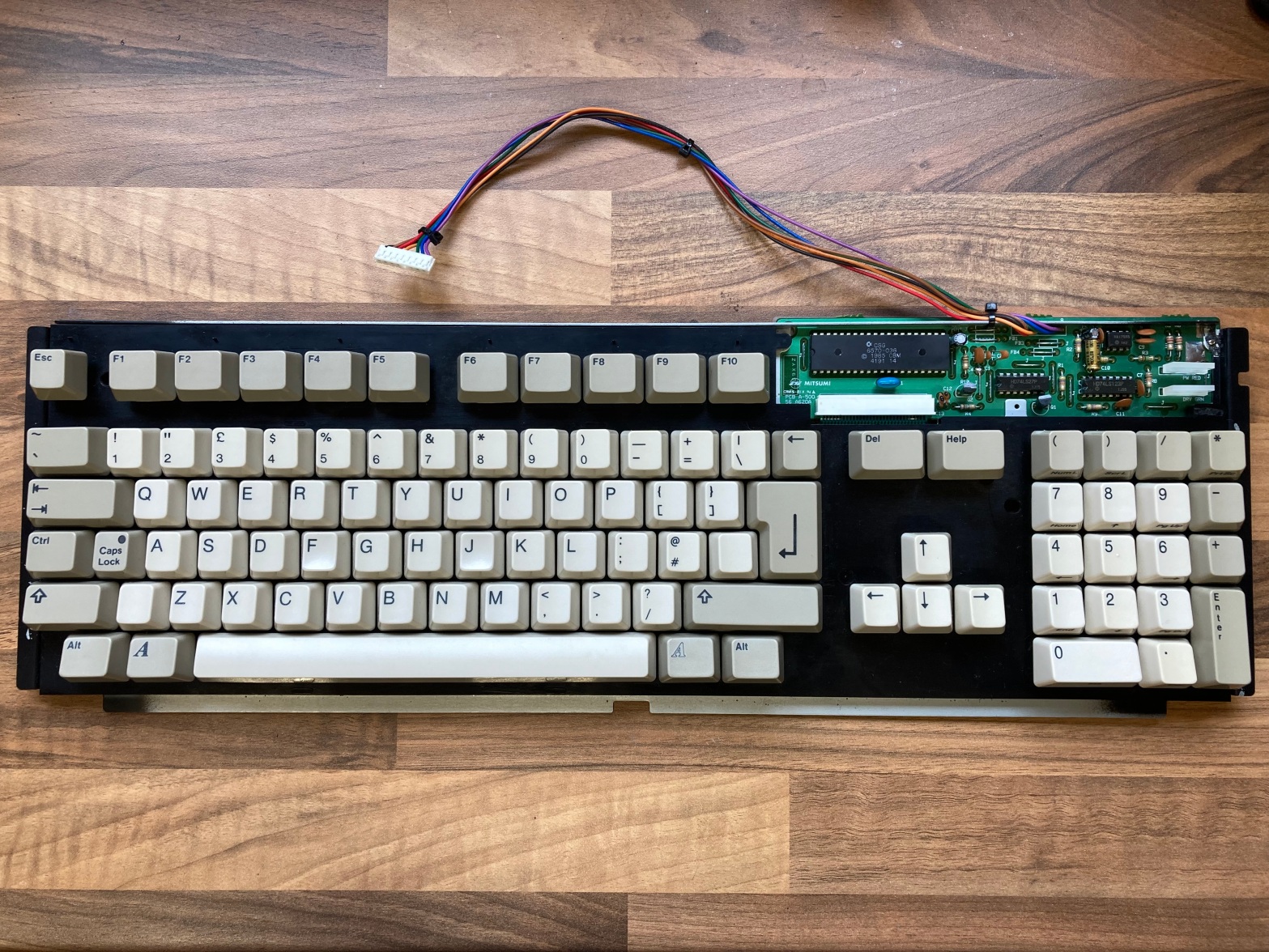A couple of weeks ago, I was testing out some upgrades on my 1995 Commodore Amiga 500+, when the keyboard died. It would sometimes work intermittently for a minute after power-on, but for the most part it was either partially or completely dead.

The keyboard in the A500 and A500+ is its own separate embedded system, based around a MOS 6570-036 / CSG 328191-02 microcontroller with its own onboard ROM, RAM, and hardware watchdog timer – this communicates serially with the A500 mainboard.
Being an intelligent system, the keyboard controller performs self-diagnostics on power-on – if it is working well enough to detect and report a fault, it uses flash codes on the caps-lock LED to provide an error code to the user.


In my case, the keyboard seemed to be completely dead (no LED activity, even with the caps-lock button pressed) about 50% of the time; the other 50% of the time, the keyboard controller seemed to be giving a 2-blink flash code, complaining about the keyboard RAM.
The keyboard ROM and RAM is onboard the microcontroller IC itself, so it was possible that this had failed – however, given the intermittent nature of the fault, I wanted to try other options first.
Solder joints on the A500 keyboard controller PCB are known to be common failure points, usually due to physical stress and cracking – there are also some low-profile electrolytic capacitors on the keyboard controller PCB, which could have developed problems (i.e. ESR, low capacitance, short/open circuits) due to age and/or use.
In this case, there were three electrolytic capacitors on the keyboard PCB:
- 1 x 1uF 50V low-profile radial.
- 1 x 10uF 16V low-profile radial.
- 1 x 22uF 16V low-profile radial.
I replaced these three capacitors with high-quality modern parts, and tested the original parts using my ESR meter – their capacitance still seemed OK, but they had in fact developed and two had leaked physically, so were worth replacing.



I also reflowed all of the solder joints on the underside of the keyboard controller of the PCB, using high-quality modern leaded solder – a close inspection didn’t show any immediate solder problems beforehand, but intermittent solder joints can be difficult to spot even using a magnifier.
After doing these steps, the keyboard seemed to work perfectly again, even after several hours of being powered up.




I’ve had problems in the past with A500 keyboards where the controller board seemed OK, but some individual keys were unresponsive. The A500 keyboard uses a membrane, and while these are typically quite reliable, they can be vulnerable to physical damage – from liquid spills, in particular. Remove and inspect the membrane, and if it seems to have physical damage, a new one may be required.


One thought on “Commodore Amiga 500/500+ Keyboard Repair”